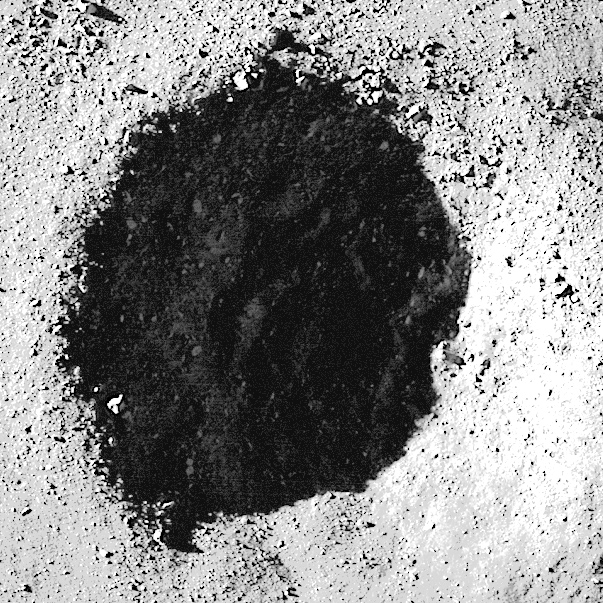Look Inside a Lunar Crater
The crater shown above is located in the lunar highlands and is filled with and surrounded by boulders of all sizes and shapes. It is approximately 550 meters (1800 feet) wide yet is still considered a small crater, and could have been caused by either a direct impact by a meteorite or by an ejected bit of material from another impact. Scientists studying the Moon attempt to figure out how small craters like this were formed by their shapes and the material seen around them…although sometimes the same results can be the results of different events.
For example, when an object from space strikes the Moon, it is typically traveling around 20 km per second (12 miles/sec). If the impact site happens to have a very hard subsurface, it can make a crater with scattered bouldery chunks composed of the hard material around it. But, if a large piece of ejected material from another impact were to strike the lunar surface at a much slower speed, as ejecta typically do (since they travel slower than incoming space debris and the Moon’s escape velocity is fairly low, meaning any ejecta that does fall back to the surface must be traveling slower than 2.38 km/s,) then the ejected chunk could break apart on impact and scatter boulders of itself around the crater…regardless of subsurface composition.
Really the only way to tell for sure which scenario has taken place around a given crater – such as the one above – is to collect and return samples from the site so they can be tested. (Of course that’s much easier said than done!)
You can read more about this image on Arizona State University’s Lunar Reconnaissance Orbiter Camera site here.
And as an added treat, take a look deep into the shadows of the crater’s interior below…I tweaked the image curves in Photoshop to wrestle some of the details out of there!
Image credit: NASA/GSFC/Arizona State University. (Edited by J. Major.)
P.S.: Want to see both image versions combined? Click here. (Thanks to Mike C. for the suggestion!)

